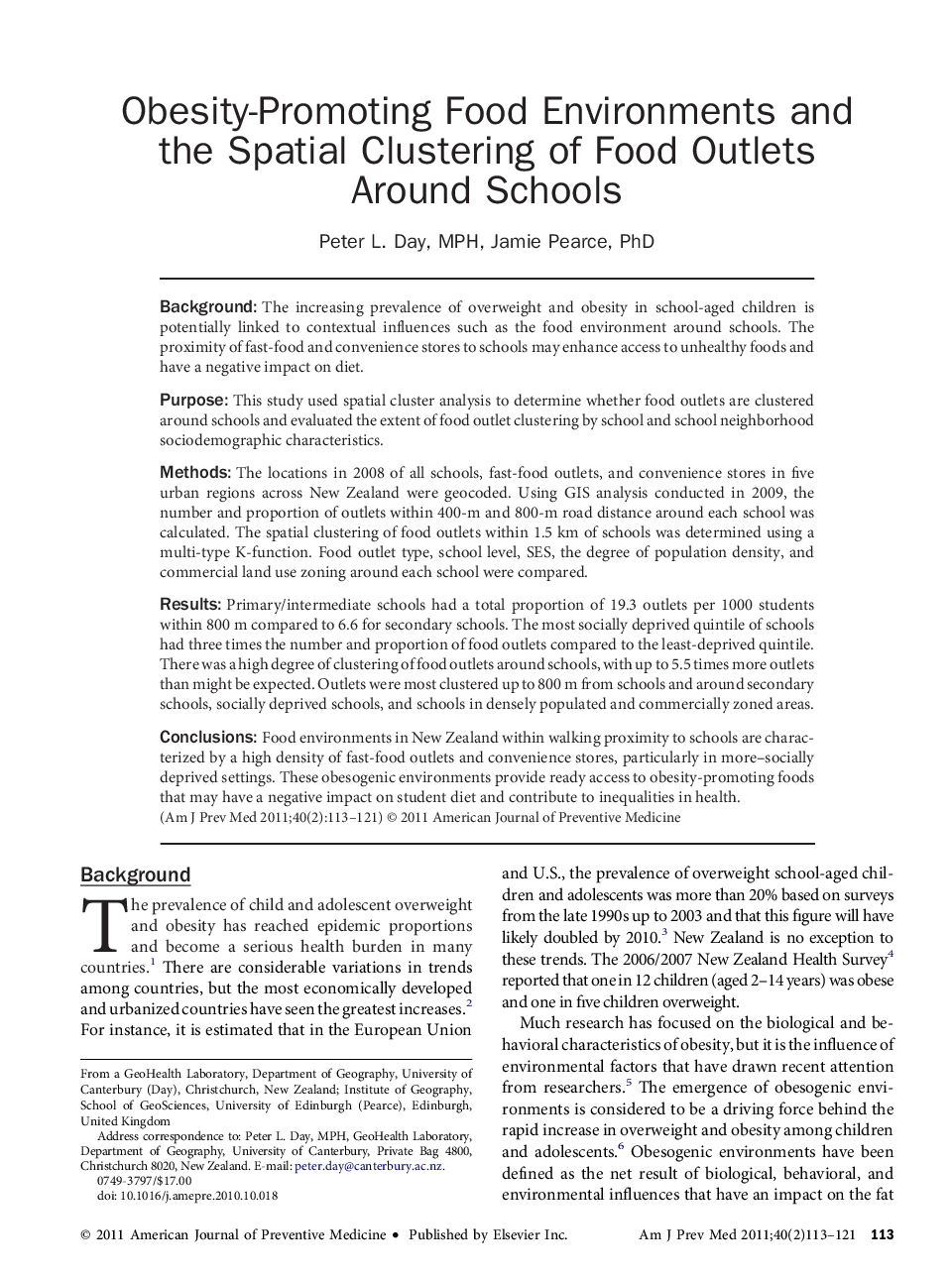| Article ID | Journal | Published Year | Pages | File Type |
|---|---|---|---|---|
| 4193275 | American Journal of Preventive Medicine | 2011 | 9 Pages |
BackgroundThe increasing prevalence of overweight and obesity in school-aged children is potentially linked to contextual influences such as the food environment around schools. The proximity of fast-food and convenience stores to schools may enhance access to unhealthy foods and have a negative impact on diet.PurposeThis study used spatial cluster analysis to determine whether food outlets are clustered around schools and evaluated the extent of food outlet clustering by school and school neighborhood sociodemographic characteristics.MethodsThe locations in 2008 of all schools, fast-food outlets, and convenience stores in five urban regions across New Zealand were geocoded. Using GIS analysis conducted in 2009, the number and proportion of outlets within 400-m and 800-m road distance around each school was calculated. The spatial clustering of food outlets within 1.5 km of schools was determined using a multi-type K-function. Food outlet type, school level, SES, the degree of population density, and commercial land use zoning around each school were compared.ResultsPrimary/intermediate schools had a total proportion of 19.3 outlets per 1000 students within 800 m compared to 6.6 for secondary schools. The most socially deprived quintile of schools had three times the number and proportion of food outlets compared to the least-deprived quintile. There was a high degree of clustering of food outlets around schools, with up to 5.5 times more outlets than might be expected. Outlets were most clustered up to 800 m from schools and around secondary schools, socially deprived schools, and schools in densely populated and commercially zoned areas.ConclusionsFood environments in New Zealand within walking proximity to schools are characterized by a high density of fast-food outlets and convenience stores, particularly in more–socially deprived settings. These obesogenic environments provide ready access to obesity-promoting foods that may have a negative impact on student diet and contribute to inequalities in health.
